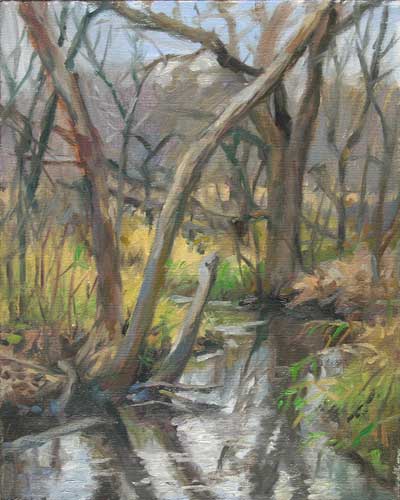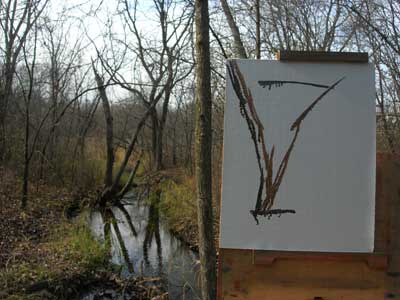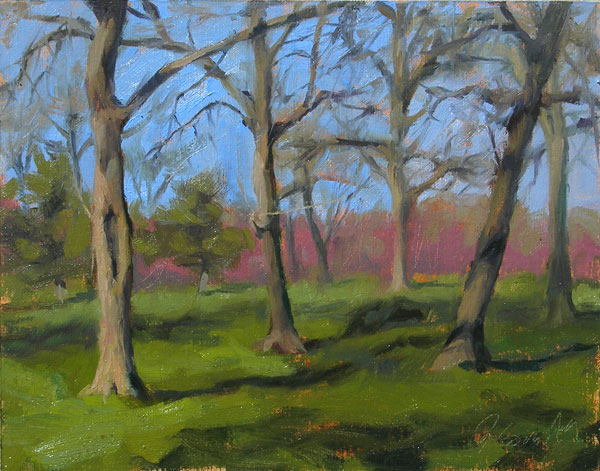Late Fall Marsh | plein air painting on the edge of a wetland and the edge of a season
When I was a little kid, and I’d get out my Crayolas to draw some trees, I kept things simple. A straight, brown column for a trunk and a tuft of green for the leaves. Maybe a cloud or a rainbow was added to ensure that I had used every color in the box, but that was it. My drawing was done.
Then I got older and started to climb trees. I realized that they had branches. It was way more than just a trunk and a green scribble. So I started including some branches in my drawings. The problem was that I didn’t understand how to ‘end’ the tree in a picture. Every drawing that I produced in that period had a straight trunk, branches, and some small clumps of green leaves. I just kept the tree going until it hit the edge of the paper. And that was that. Picture’s done.
Painting outside after the leaves had fallen would have helped me as a young artist to figure out what to do with those trees. It would have given me an idea of how the branches attach to the trunk. Or what happens to the branches as they grow out from the trunk? And most importantly, painting outside after the leaves have passed would have given me a view into the anatomy of trees, that is, the skeleton that gives the tree it’s shape–the armature that gives the whole thing a gesture.
I decided to start this painting with the gesture of the central clump of trees. Everything in the natural world has a gesture to it. A ‘way’ that the trunk grows. A very specific shape to it all.
When I was in school at The Atelier, a portrait or a figure painting would almost always start with getting a sense of the underlying gesture. I would ask myself questions like, “How is the model standing? How is the weight divided between her feet? Is his head tilted?”
Questions I might ask myself while staring at a plein air painting subject:
- Compared to a vertical line, is this tree leaning?
- Are all the trees in this clump leaning in the same direction?
- Are all of these trees leaning at the same angle?
- Is the tree trunk relatively straight, or does the angle change at a certain point?
- Is the tree going to fit entirely on the canvas? If not, where will it cross over the edge?
- Where does the shape start, and where does it end?
- Does standing next to this tall, thin tree make me look fat in these pants?
Regardless of subject matter, I have been most successful with paintings that began with taking the time to draw out a strong gesture.
All of that is not to say that there was anything wrong with the simple brown trunks and green scribbles that I started with when I was a kid. A painting should begin with a simplified, general shape. At the starting point in the painting process, you should be thinking abstract. As you’re applying paint, think about what your subject and its surroundings would look like if you were cutting the shapes out of colored paper. The detail is not there, but even at these early stages, seeking out the gesture or specifics of a shape is what conveys the character of the subject.
My childhood tress all looked alike. I had created an idea in my head about how to draw a tree. My trees grew branches as I moved on to a new idea about how to draw a tree based on my experience of climbing them. Now as I paint, my experience of climbing gives way to specific shapes and dynamic gestures gleamed from direct observation of trees out in the natural world.




